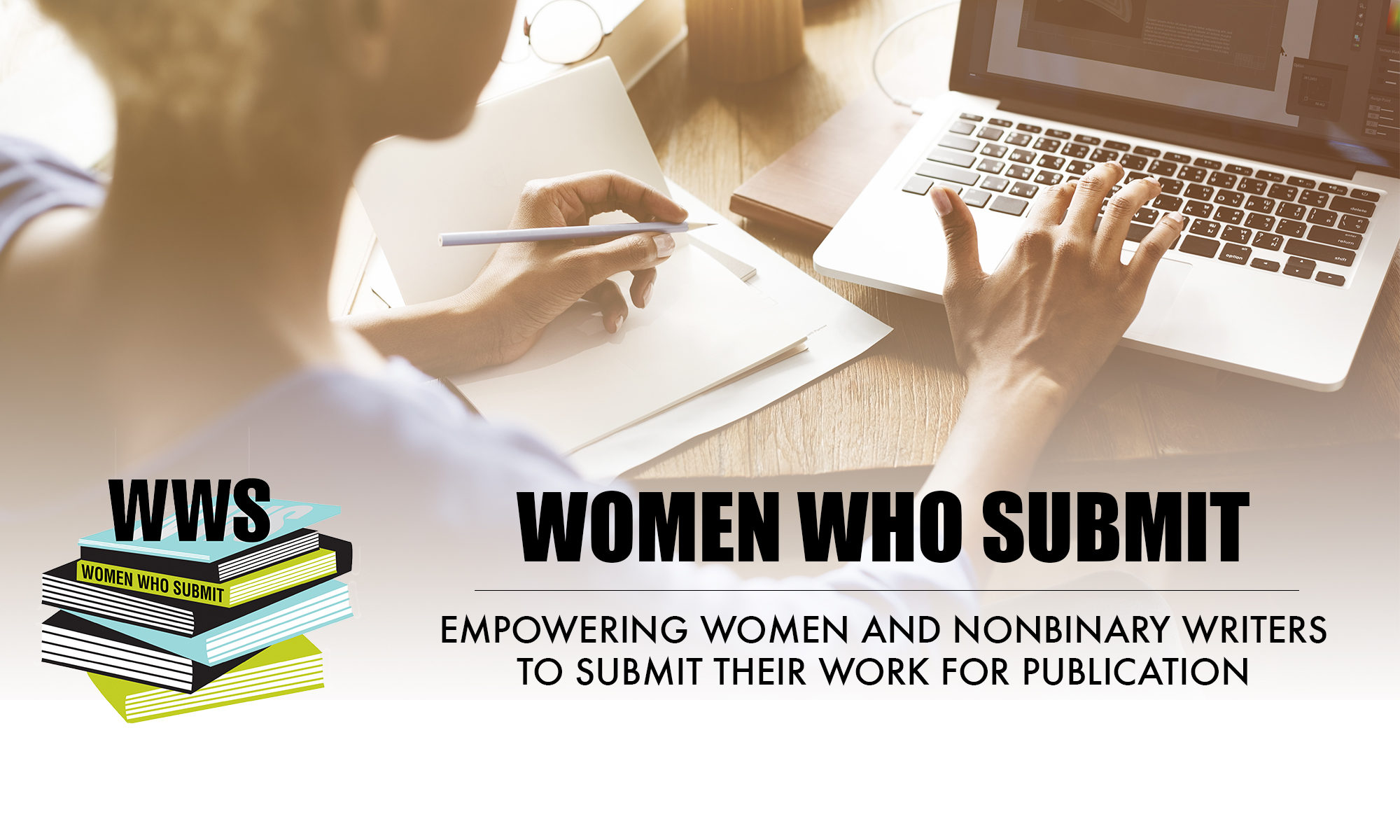SUBMIT 1 is the one day out of the year WWS encourages woman-identifying and non-binary writers across the globe to send one of their most beloved pieces of writing to tier-one journals as one community. This is an act of solidarity, not only with our writers, but with editors and publishers as well. SUBMIT 1 dares to connect the literary publishing community as a whole.

September 2014 was the first time we called on our WWS community to submit to tier-one literary journals en masse. Inspired by the 2009 VIDA Count from VIDA, Women in Literary Arts, which published quantitative evidence of the dearth of women’s voices in top tier publications, this submission drive became our annual call to action for equity and wider representation in publishing. In 2014, a group of writers gathered at Hermosillo Bar in Highland Park, CA for a day of beers, cheers, and literary submissions. Since then, we’ve hosted an annual submission drive at public places across Los Angeles, but when the pandemic hit in 2020, we pushed to think of a creative solution to gathering, and the @WomenWhoSubmit Instagram Live programming was born.

WWS is excited to announce that our 10th annual SUBMIT 1 will be hybrid! Join us on Instagram Live @WomenWhoSubmit for special one-hour hosts from 9am-9pm or in-person at Pocha LA in Highland Park from 2pm-5pm. You can find us on the back patio with live hosts Tisha Marie Reichle-Aguilera and Ryane Nicole Granados. We thank Pocha LA for hosting us!
How to Participate:
1. Before September 9th, study THIS LIST of “Top Ranked Journals of 2023” with current open calls to find a good fit for your work. Links to guidelines are included. BE SURE TO READ AND FOLLOW THE GUIDELINES.
2. On September 9th, submit one of your most beloved pieces of writing to at least one tier one magazine from wherever you are in the world at any time of day.
3. Notify us on Twitter or IG. Be sure to tag us @womenwhosubmit, so we can celebrate you with lots of claps, cheers, and funny gifs.
4. Hang with us on IG Live at @WomenWhoSubmit from 9am to 9pm PACIFIC for a full day special guests, support, and resources. Here is where you can ask WWS members for tips on submitting, get encouragement, or receive LIVE claps for when you hit send.
SUBMIT 1 IG Live Schedule (all times are PACIFIC):
9am-10am: Xochitl-Julisa Bermejo (@xochitljulisa), WWS Director
10am-11am: Joy Notoma (@joywriteshermedicine), WWS-Europe Chapter Lead
11am-12pm: Carrie Finch, WWS-Bay Area Chapter Lead
12pm-1pm: Lunch break!
1pm-2pm: Luivette Resto (@lulubell.96), Board Member, LIVE from Tia Chucha’s Centro Cultura (@tiachuchas)
2pm-3pm: Melissa Chadburn (@mchadburn), WWS Board Member
3pm-4pm: Kate Maruyama (@katemaruyama), Board Member interviewing WritLarge Projects (@writlargeprojects)
4pm-5pm: Cocktail hour with live check-ins from Pocha LA (@pocha_losangeles)
5pm-6pm: Dinner break!
6pm-7pm: Jane Muschenenetz & Karla Cordero (@karlaflaka13), WWS-San Diego Chapter Leads
7pm-8pm: Lucy Rodriguez-Hanley (@lucyrodriguezhanley), WWS-Long Beach Chapter Lead & WWS Chapter Liaison
8pm-9pm: Traci Kato-Kiriyama (@traciakemi1) LIVE from Little Tokyo
5. After submitting, fill out THIS FORM to help us track how many submissions were sent out, which will help us in our continued mission towards gender parity and wider representation of marginalized voices in literary publishing.
How to Support:
If you don’t plan to submit with us, but would like to support our efforts, please consider making a donation at our Paypal account in the name of your favorite WWS member or underrepresented writer.
SUBMIT 1 Budget:
Submit 1 Coordinator – $500
IG Coordinator – $500
IG Guest Speakers – $1,350 (9 people x $150)
La Pocha Live Hosts – $500 (2 people x $250)
Refreshments – $350
Stickers, signs, and materials – $300
Total – $3,500


















